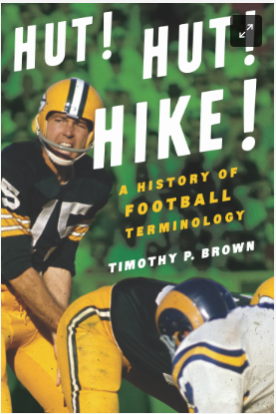Al Lopez Baseball Hall of Fame Manager and Player
Lopez's playing career spanned 19 seasons, from 1928 to 1947. He donned the catching mitt for four teams – the Brooklyn Robins/Dodgers, Boston Bees, Pittsburgh Pirates, and Cleveland Indians. While his offensive statistics weren't eye-popping, he was a defensive stalwart. He holds the major league record (since broken) for most games caught (1,918) and was known for his calmness behind the plate, expertly handling a variety of pitching styles. Nicknamed "El Señor" for his gentlemanly demeanor and Spanish heritage, Lopez earned the respect of his teammates and opponents alike.
However, Lopez's true legacy lies in his managerial career. After a brief stint in the minor leagues, he took the helm of the Cleveland Indians in 1951. What followed was a remarkable stretch of success. In 15 full seasons as manager, Lopez's teams never finished lower than second place and never had a losing record. This consistency was unheard of at the time, showcasing his exceptional leadership skills.
His crowning achievement came in 1959 with the Chicago White Sox. Despite a lack of power hitters, Lopez instilled a "Go-Go" style of play with an emphasis on speed and base stealing. This unconventional approach, coupled with strong pitching, led the White Sox to their first American League pennant in 40 years. Though they fell short in the World Series, Lopez's feat cemented his reputation as a tactical innovator.
Beyond wins and losses, Lopez fostered a positive environment for his players. He was known for his loyalty and dedication to his teams, creating a sense of camaraderie that fueled their success. He also played a pivotal role in the integration of baseball, managing future Hall of Famers like Minnie Minoso and Luis Aparicio.
Legendary Baseball Hall of Fame player and manager Al Lopez. Born August 20, 1908, in Tampa, Florida, was Baseball Hall of Fame inductee Al Lopez.
He played in Major League Baseball (MLB) for the Brooklyn Robins / Dodgers, Boston Bees, Pittsburgh Pirates, and Cleveland Indians between 1928 and 1947, and was the manager for the Cleveland Indians and the Chicago White Sox from 1951 to 1965 and during portions of the 1968 and 1969 seasons.
Lopez is one of the top MLB players to have worn Jersey Number 12.
Ken Caminiti A Baseball Talent
Caminiti's path to stardom wasn't linear. Drafted by the Houston Astros in 1987, he bounced around the league for several years before finding his footing with the San Diego Padres in 1992. Here, his natural talent blossomed. He honed his defensive skills and developed a powerful swing, culminating in a breakout 1996 season.
That year, at the age of 31, Caminiti seemingly defied the aging curve. He openly admitted to using steroids to recover from a shoulder injury, and the results were undeniable. His home run total jumped from 26 the previous season to an astounding 40. He also led the league in batting average (.326) and RBIs (130), a feat that earned him the National League Most Valuable Player Award.
Caminiti's MVP season was a revelation, showcasing his immense potential. He became a fan favorite, leading the Padres to the playoffs for the first time in franchise history. However, the shadow of steroids loomed large. His sudden surge in power fueled speculation, and his career trajectory never fully recovered.
While he remained a valuable player for a few more seasons, injuries plagued him, and his production declined. The stigma surrounding his steroid use tarnished his image. In 2002, he tragically passed away at 41, leaving behind a legacy of "what if."
Ken Caminiti's story is a complex one. He was a gifted athlete who achieved greatness, albeit with an asterisk attached. His career serves as a reminder of the dark side of performance-enhancing drugs and the pressure athletes face to push the boundaries. While his accomplishments deserve recognition, the controversy surrounding his use of steroids casts a long shadow.
Viacheslav Fetisov Hockey Legend
Fetisov was one of the first Russians to play in the NHLand helped countless other by paving a road for the Soviet Union to join the NHL. His actions not only resulted in several top Soviet players joining the NHL but also encouraged many of the best players from all over Europe to go to North America. His accoaldes go beyond this though.
-Internationally, he was a long-time captain for the Soviet Union national team.
-A two-time Olympic champion.
-Russian Ice Hockey Olympic team as GM and head coach, attaining a bronze medal in 2002.
-Top defensemen of all time
-One of six players to the International Ice Hockey Federation's (IIHF) Centennial All-Star Team.
-Inducted into the IIHF Hall of Fame in 2005.
His remarkable achievements were further recognized with his induction into the IIHF Hall of Fame in 2005. There's no doubt that Fetisov's legacy continues to inspire generations of ice hockey players worldwide.
Born April 20, 1958, in Moscow, Russia, was Hockey Hall of Fame defenseman Viacheslav Fetisov. He played for HC CSKA Moscow for 13 seasons before joining the National Hockey League, where he played with the New Jersey Devils and Detroit Red Wings.
Frank Chance World Series Champ and HOF Player
Born September 9, 1877, in Salida, California, was Baseball Hall of Fame First Baseman, Frank Chance. This legend was a World Series Champion in 1907, 08 with the Chicago Cubs. Chance was the National League stolen base leader and the NL runs leader 1906.
Frank started playing ball for the Cubs organization when they were called the Chicago Orphans in 1898 and played right through the 1903 season when the Cubs moniker was adopted. Chance also served as a manager of the Chicago Cubs, NY Yankees, and Boston Red Sox after his playing career.
Max Carey Pittsburgh Pirates Hustling HOF Outfielder
-Speed Demon: Carey's defining stat was stolen bases. He swiped a breathtaking 738 of them, a National League record that stood for nearly four decades. He terrorized pitchers with his daring attempts, a blur of legs and dirt churning towards home.
-Hits galore: But Carey wasn't just a speedster; he hit too. He averaged over .280 for his career and amassed nearly 2,665 hits, proving his talent extended beyond the basepaths.
-World Series star: In 1925, Carey's brilliance helped the Pittsburgh Pirates clinch the World Series. He batted a scorching .458, smashing three doubles and silencing all doubters who questioned his clutch gene.
A touch of darkness: Carey's career wasn't without shadows. He battled injuries, clashed with management, and even spent time on a team implicated in Mafia ties. But his on-field talent and impact on the game remain undeniable.
Max Carey's legacy, like his stolen bases, remains fast-paced and vibrant. He wasn't just a statistic; he was a spark plug, a showman, and a reminder that talent and audacity can leave a lasting mark on the diamond.
Ken Reardon A Hall-of-Fame Defenseman Built on Grit and Guts
A Fearsome Defender: Nicknamed "The Irishman" for his fighting spirit, Reardon carved out a reputation as a physical, intimidating defenseman. He wasn't afraid to mix it up in the corners, racking up a staggering 604 penalty minutes throughout his career. His toughness served as a deterrent to opposing forwards and inspired confidence in his teammates.
Leadership and Consistency: Beyond the physicality, Reardon displayed exceptional leadership qualities. His dedication and work ethic were contagious, earning him the respect of teammates and coaches alike. He was a reliable presence on the ice, known for his consistency and ability to shut down opposing offenses.
A Stanley Cup Champion: Reardon's contributions were instrumental in the Montreal Canadiens' success. He played a key role in their 1946 Stanley Cup victory, solidifying his place as a champion. While his career didn't extend into the era of individual accolades, he was named a First-Team All-Star twice and a Second-Team All-Star three times, signifying his consistent dominance as a defenseman.
Murray Costello Hockey Hall of Fame
Playing Career (1952-1962):
-Limited NHL Success: Played four seasons (1958-1962) in the National Hockey League (NHL) for the Detroit Red Wings.
-Statistics: Despite having respectable offensive skills, he struggled to adapt to the physical demands of the NHL, amassing only 13 goals, 19 assists, and 32 points in 162 games.
-Early Retirement: He realized his limitations and decided to retire from professional hockey at the age of 28.
Administrative Career (1960s-Present):
-Shifting Gears: After his playing career, Costello returned to school and earned his law degree. He then transitioned into the administrative side of hockey.
-WHL Success: He served as an executive with the Seattle Totems in the Western Hockey League (WHL) and guided them to back-to-back championships in 1967 and 1968.
-Leadership Roles: He held various leadership positions within the hockey community, including serving as president of the Canadian Amateur Hockey Association (now Hockey Canada) for 19 years (1979-1998).
-Lasting Impact: During his tenure, he played a crucial role in developing women's hockey and contributed significantly to the overall advancement of hockey in Canada.
Honors and Recognition:
-Inducted into the Hockey Hall of Fame in 2005, recognizing his overall contributions to the sport beyond just his playing career.
-Recipient of numerous other awards and accolades for his dedication and service to Canadian hockey.
It's important to remember that while Murray Costello's playing career in the NHL was relatively short, his achievements in administration and his dedication to the sport earned him a lasting legacy in the hockey world.
Andy Pafko Baseball Legend
Pafko's career highlights include:
Four-time All-Star (achievement not as common then as it is today)
A lifetime batting average of .285 with 213 home runs and 976 RBIs
Playing in four World Series with three different teams (Chicago Cubs in 1945, Brooklyn Dodgers in 1951, and Milwaukee Braves in 1957 and 1958)
Being named to the Chicago Cubs All-Century Team in 1999
While Pafko never won a World Series championship, he was a key part of some great teams and is fondly remembered by Chicago Cubs fans.
Andrew Pafko (February 25, 1921 – October 8, 2013) was an American professional baseball player. He played in Major League Baseball (MLB) for the Chicago Cubs (1943–51), Brooklyn Dodgers (1951–52), and Milwaukee Braves (1953–59).
George Kell Baseball Hall of Fame
Kell's journey began with the Philadelphia Athletics in 1943. Though his early years were overshadowed by World War II, his talent was undeniable. He possessed a smooth swing, a keen eye at the plate, and an uncanny ability to make consistent contact. This translated into a staggering nine seasons where he batted over .300, including a league-leading .343 in 1949, narrowly edging out the legendary Ted Williams.
While not a power hitter, Kell was a nightmare for opposing pitchers. He averaged a mere 26 strikeouts per season, showcasing his exceptional plate discipline and ability to put the bat on the ball. He won the hearts of fans with his hustle and grit, diving for every grounder and never giving up on a play. His quiet leadership and positive attitude were invaluable assets to the teams he played for.
Kell's greatest success came with the Detroit Tigers, where he became a fan favorite and a fixture at third base for seven seasons. He was a key member of their potent lineup in the early 1950s, playing alongside the likes of Al Kaline and Harvey Kuenn. While the Tigers never reached the World Series during his tenure, Kell's consistency and leadership were instrumental in their success.
Following his playing career, Kell transitioned seamlessly into broadcasting, becoming a beloved voice for the Detroit Tigers for an incredible 37 years. His folksy charm and insightful commentary endeared him to a new generation of fans.
The life and career biography sketch of former MLB star George Kell. Kell was an MLB third baseman from Arkansas State who played 15 seasons for the Philadelphia Athletics (1943–1946), Detroit Tigers (1947–1952), Boston Red Sox (1952–1954), Chicago White Sox (1954–1956), and Baltimore Orioles (1956–57). He is one of the top MLB players that wore the Jersey Number 7.



.jpg?https://jerseydispatch.com/pfeL/p/c312642c0431e75b485e432232c99c1c/website/Daily-Sports-Uniform-Number-History/February/February-8-Jersey-Numbers/Images/.Basketball_at_Pas-en-Artois,_France,_1918_(20166469838).jpg)
.jpg?https://jerseydispatch.com/pfeL/p/c312642c0431e75b485e432232c99c1c/website/Sports-History-Photo-of-the-Day/February-Images/February-8-Image/images/.640px-Arctic_Sisterhood_Basketball_banner,_Nome_(NOWELL_200).jpg)





